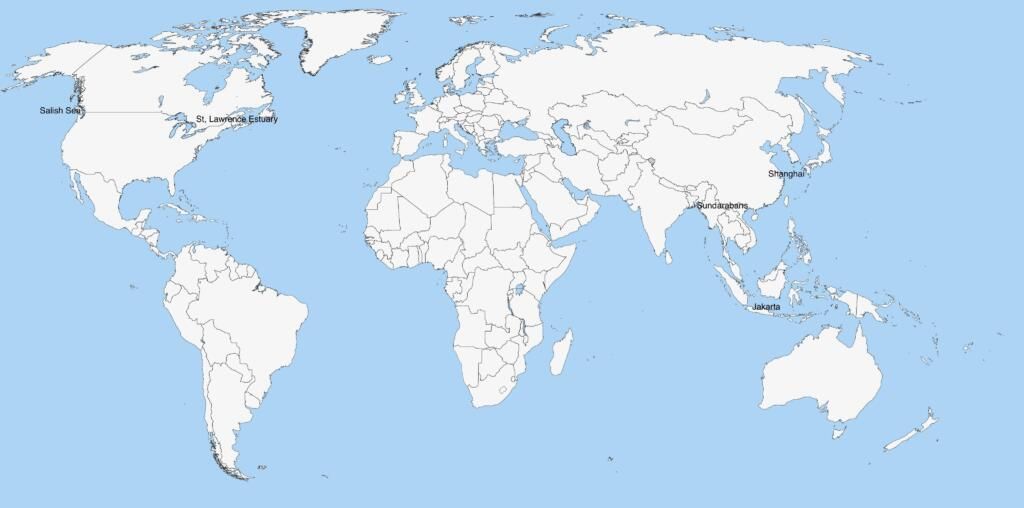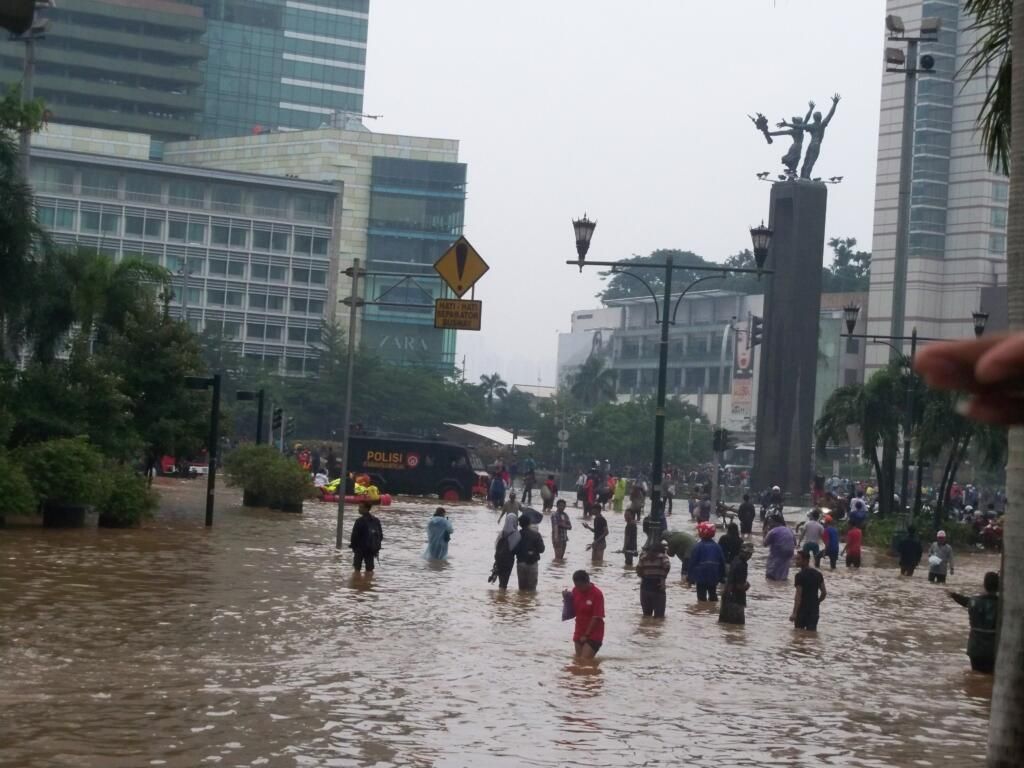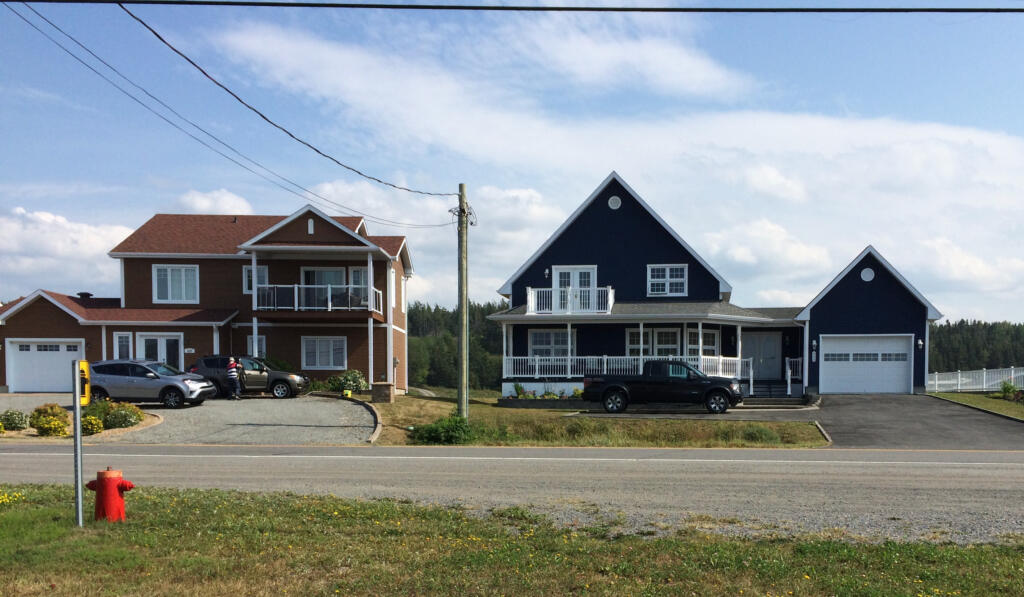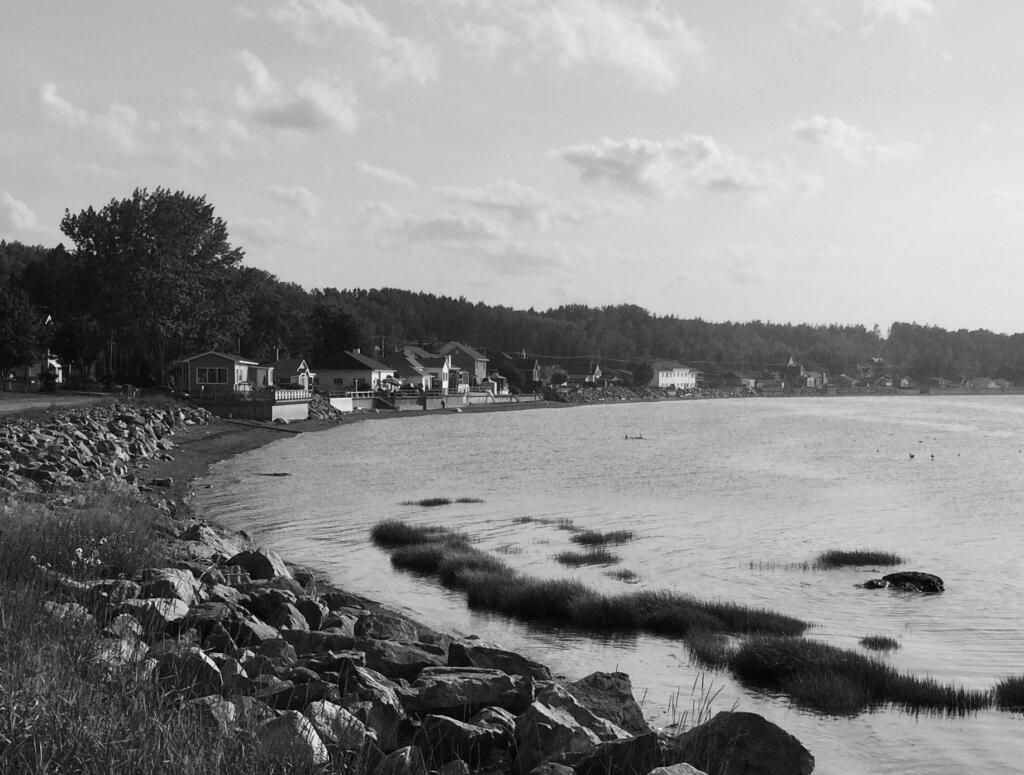Addressing rising sea levels
Against the Seas: Saving Civilizations from Rising Waters
by Mary Soderstrom
Toronto: Dundurn Press, 2023
$26.99 / 9781459750487
Reviewed by Ryan Mitchell
*

Mary Soderstrom’s Against the Seas dives into the rise in sea levels across the globe, threading an alarming climate change phenomenon with a historic struggle by human civilizations over millennia. Her book weaves through examples of the fight against rising waters, crystalized through devastating floods, storms, and rains. Soderstrom’s subject is ambitious; she does not focus on a single coastline or country, yet commonly traces her narrative back to her city of residence in Montreal. This would appear deliberate, as Soderstrom takes the reader through vast examples of human trial and error in climate change mitigation practices, revealing how the fight against rising sea levels transcends borders, governments, and markets.

Soderstrom describes how flooding has been disastrous and advantageous at different points throughout history; with some of the earliest civilizations depending on fertilizing flood waters for agriculture, the basis for sedentary civilizations, with others being swept almost entirely away in sudden floods. Famously, the Dutch of the low-lying Netherlands have fought against the seas for centuries, including the use of polders (starting in the 1600’s), where low-lying marshland tracts were drained to gradually reclaim land from the sea. In Canada, a similar practice gained prominence in the 17th and 18th Century in French Acadia. She relates a story of two famous French explorers who penetrated the St. Lawrence within 30 years of each other, with the second noting a starkly dwindling number of lakeside encampments in the region, compared to reports from his predecessor. This was likely not only fueled by the diseases brought on by contact with European ships but also from erosion due to clear-cutting trees along embankments to make room for settlements.

Soderstrom also covers more recent, ambitious projects to reduce flooding such as MOSE, the Venetian Grand Central anti-flooding system. This system features seventy-eight mobile barriers, rising from the bottom of the lagoon encompassing the city, and was finally completed in 2021, saving Venice from major flooding in November of that year. However, this is shown to be still prone to human error, as seen with a faulty weather alert system that failed to prevent the flooding of St. Mark’s Square in December 2021. Here, Soderstrom raises the issue of how media attention is given to large-scale plans proposed by tech giants in the private sector, when smaller-scale approaches can be just as effective, replicable, and less risk-prone. In Venice, she points to efforts made to raise embankments and buildings in the city centre, water pollution management, and the re-naturalization of salt marshes to create soft barriers from flooding.

Against the Seas challenges conventional practices of rising sea level defenses, such as hard, concrete barriers to fend off rising tides. Soderstrom points to this strategy as a popular tool which can be counterproductive, as they direct the force of water outwards resulting in stronger pressure in adjacent directions. Soderstrom also argues that climate change solutions are subject to emotional responses. This was seen after the Fukushima reactor disaster when Germany rapidly phased out its nuclear energy projects in subsequent years. This directly led to an increased reliance on Russian imports of oil, which caused a socio-political conundrum after Russia invaded Ukraine in 2022.

Soderstrom’s book highlights international and inter-governmental efforts allowing the exchange of ideas to flourish. One example given is with the Dutch engineers who consulted with the Chinese government on projects to create “sponge cities”; effectively diverting and absorbing water in urban contexts, allowing water to drain naturally. This was achieved through deepening floodplains, and relocating water canals, instead of building hard surfaces overtop of existing canals. Coincidentally, Dutch water management experts also advised the Canadian government for the coastal flood adaptation strategy of British Columbia; after the province announced a likely 1-meter rise in sea levels by 2100. Soderstrorm describes a mixed modal strategy of reinforcing dams, and ‘’softer’’ changes such as the addition of sediment to create sloping marshlands. Evidently, no single water level curtailing method will work in every country, which Soderstrom stresses throughout the book as reason for inventive strategies and collaboration.

Against the Seas is unconventionally structured for a climate-science related work. Soderstrom does not simply paint a dire, if realistic, picture of the colossal failure of government inaction worldwide through statistics and quantitative graphics. Naturally, Soderstrom still employs the use of key metrics and charts to contextualize the issue, yet presents a grounded and compelling narrative. Soderstrom prefaces each chapter with a poem, song, or memory that personalize the warnings of the book, and showcase our shared humanity in the face of adversity. She depicts the rise of flood crises, storms, and other climate disasters by linking mythologies of ancient civilizations, to personal anecdotes and coverage of rising seas in media stories.

*

Ryan Mitchell is an avid reader and part-time editor passionate about people’s stories, history, film, and cities. His background is in sociology and urban studies, and he enjoys volunteering with local cycling initiatives, film, and street festivals. In recent years, he gained experience as an editor for a UN-sponsored NGO called AlterContacts: Lockdown Economy, archiving small-business experiences facing the challenges of the pandemic. He has studied the gentrification of Amsterdam’s De Wallen neighbourhood (also known as the Red-Light District), and covered the grassroots community-planning movement preserving Toronto’s historic Kensington Market neighbourhood. An Ontarian now based in Vancouver, Ryan enjoys exploring the rainy coast of BC and the Pacific Northwest and is working to become a city planner. [Editor’s Note: Ryan Mitchell has previously reviewed Tamar Glouberman’s Chasing Rivers: A Whitewater Life ]
*
The British Columbia Review
Interim Editors, 2023-24: Trevor Marc Hughes (non-fiction), Brett Josef Grubisic (fiction)
Publisher: Richard Mackie
Formerly The Ormsby Review, The British Columbia Review is an on-line book review and journal service for BC writers and readers. The Advisory Board now consists of Jean Barman, Wade Davis, Robin Fisher, Barry Gough, Hugh Johnston, Kathy Mezei, Patricia Roy, Maria Tippett, and Graeme Wynn. Provincial Government Patron (since September 2018): Creative BC. Honorary Patron: Yosef Wosk. Scholarly Patron: SFU Graduate Liberal Studies. The British Columbia Review was founded in 2016 by Richard Mackie and Alan Twigg.
“Only connect.” – E.M. Forster





























One comment on “Addressing rising sea levels”